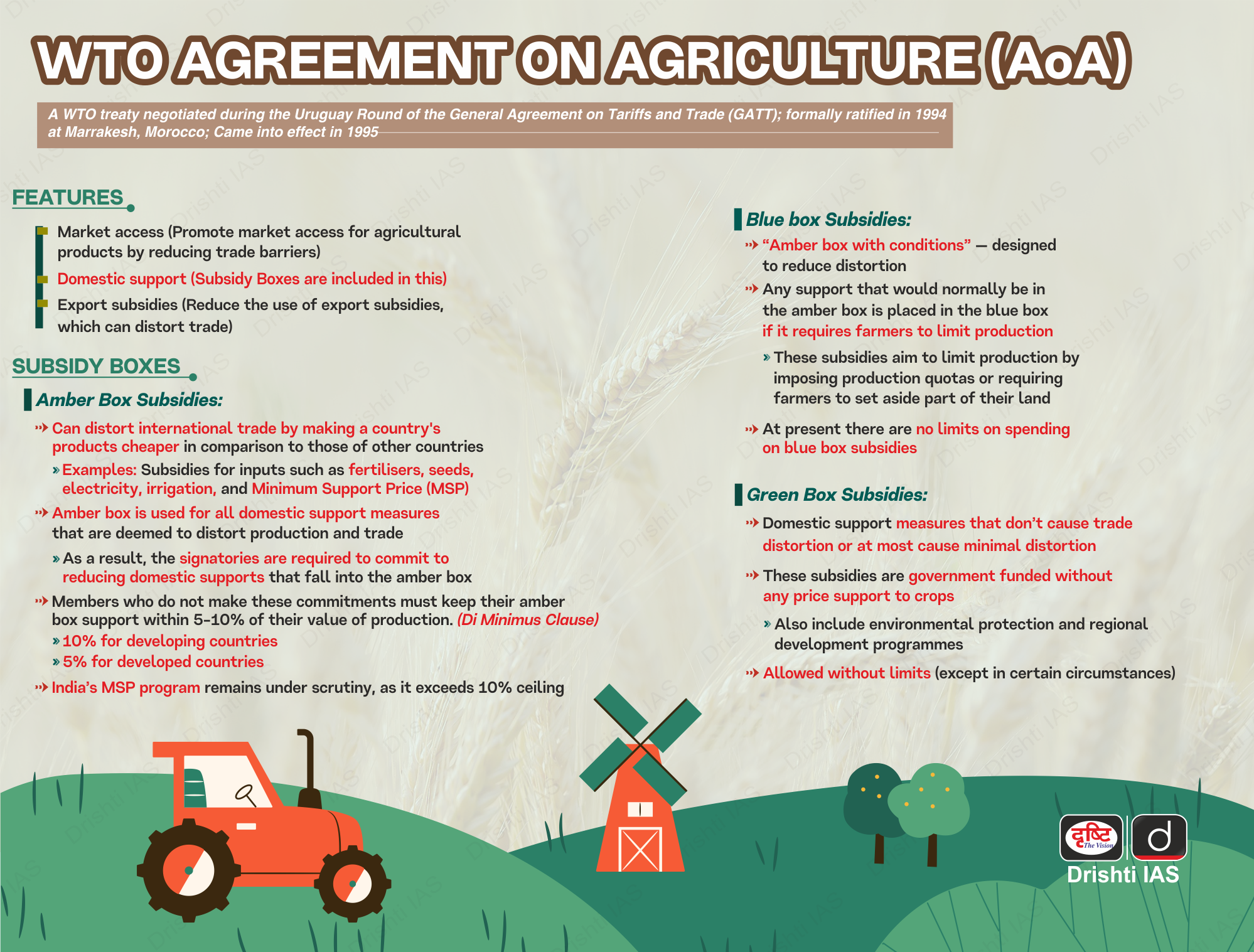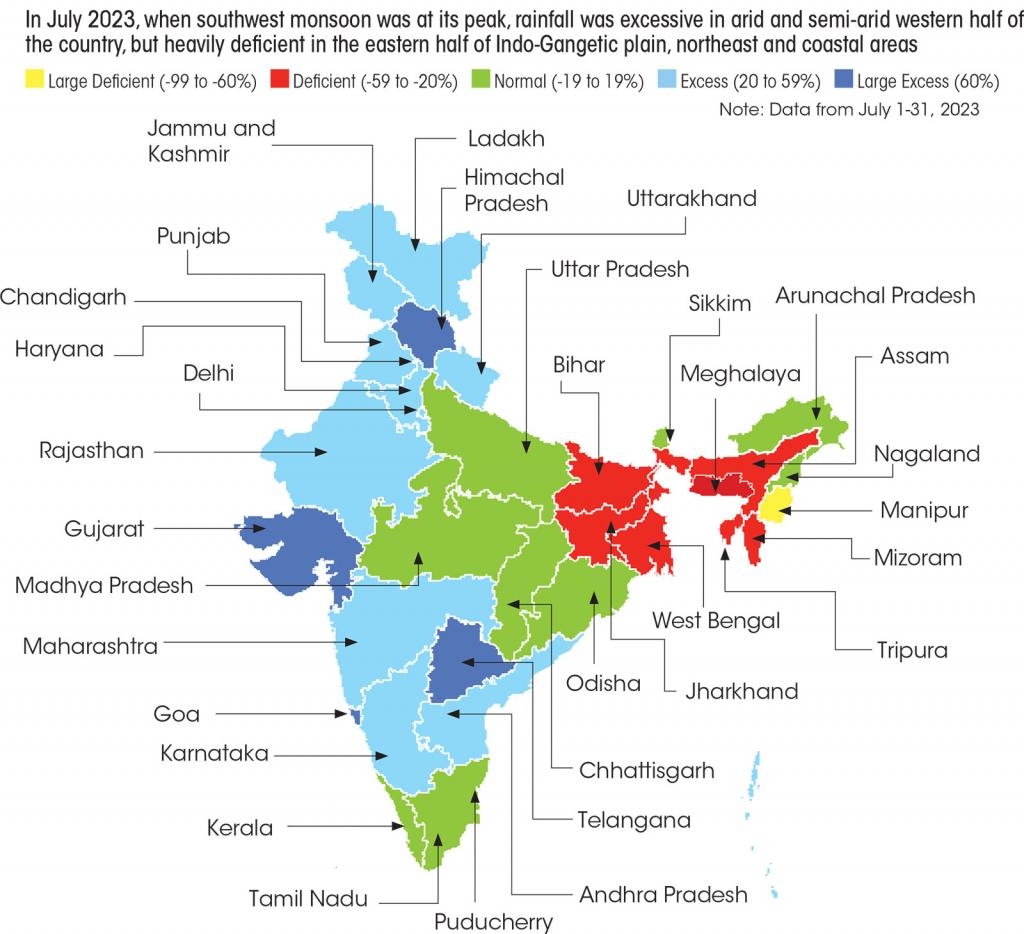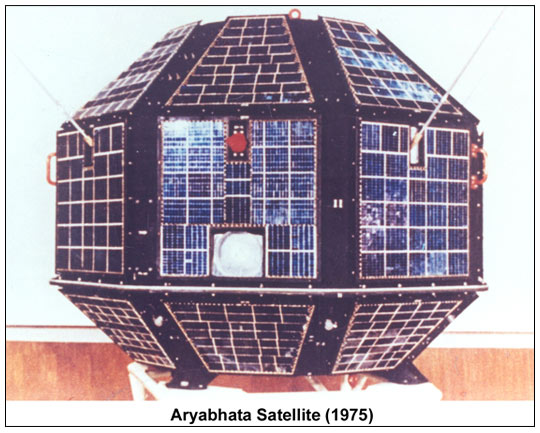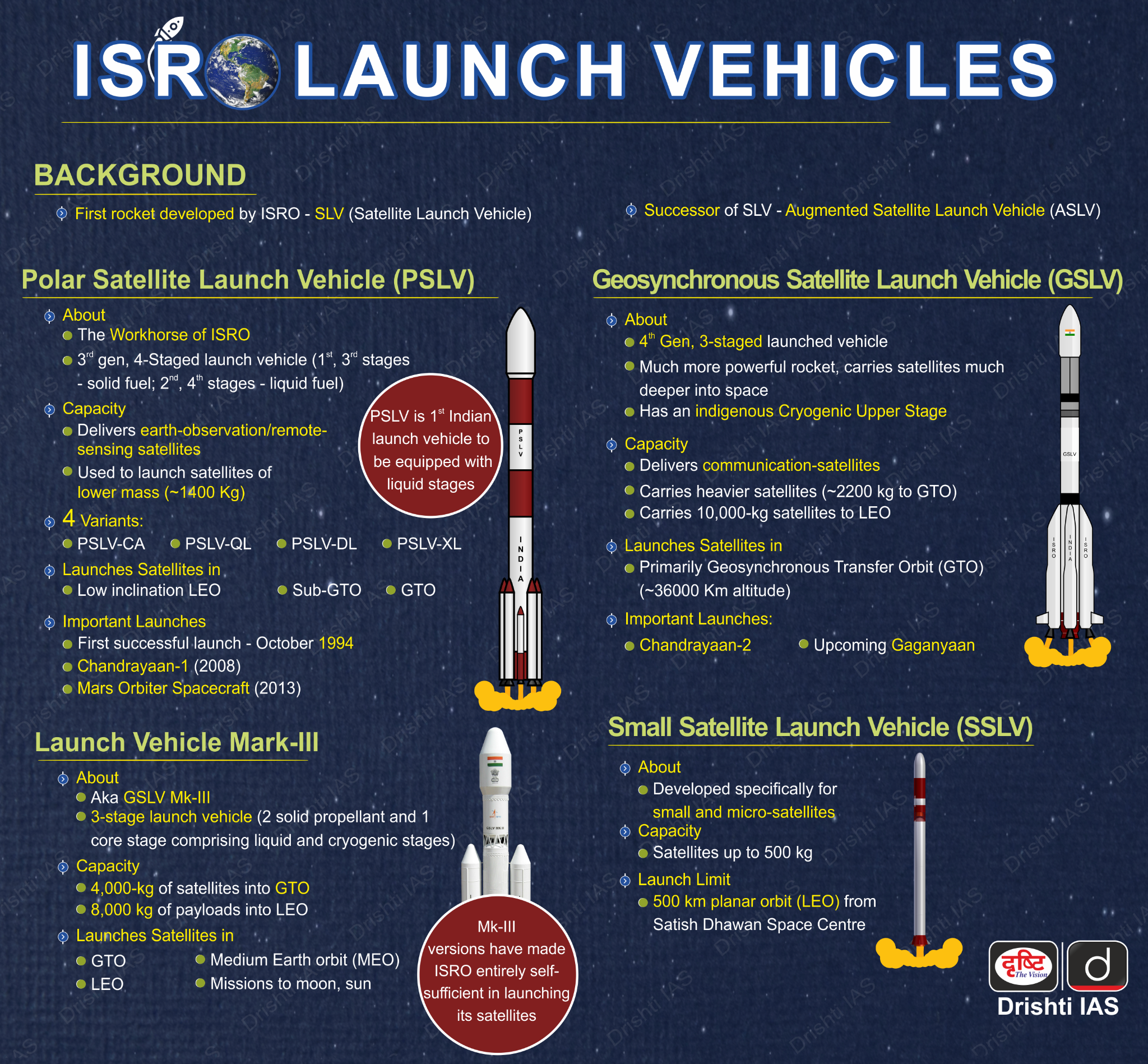Economy
India Calls for Permanent Solution for Public Stockholding
For Prelims: World Trade Organization, Public stockholding, Minimum support price, Social welfare programs, WTO Agreement on Agriculture.
For Mains: Advantages and issues associated with public stockholding
Why in News?
At the 13th ministerial conference of the World Trade Organization (WTO), India asserted a robust position concerning the permanent solution for public stockholding for food security.
What are the Key Points Highlighted by India?
- Broadening Focus of WHO: India has called for a shift in the WTO's focus, urging it to move beyond catering solely to the trade interests of agricultural exporters.
- Instead, the organisation should prioritise addressing fundamental concerns such as food security and sustaining livelihoods.
- Developing Country Needs: India argues that public stockholding programs are essential for developing countries to ensure food security for their populations, especially for vulnerable sections of society.
- The current WTO rules allow some leeway for developing countries regarding public stockholding programs.
- However, these provisions are temporary and India seeks a permanent solution that acknowledges their development needs.
- Recently, G-33 nations also upheld the right of the developing country to use the Special Safeguard Mechanism (SSM) as an important instrument against major import surges or sudden price declines.
- Call for Level Playing Field: India stressed the necessity of creating a level playing field in international agriculture trade, especially for low-income or resource-poor farmers across the globe. This aligns with the broader goal of promoting fairness and equity in trade practices.
- India pointed out the glaring disparities in domestic support provided by countries to their farmers.
- Notably, subsidies in some developed countries are reported to be up to 200 times higher than those in developing nations.
- Also, India as a member of G-33 nations also urged WTO to find a permanent solution to public stockholding.
- India pointed out the glaring disparities in domestic support provided by countries to their farmers.
What is Public Stockholding?
- About: Public stockholding refers to the practice of governments purchasing, storing, and eventually distributing food grains. India along with many other countries uses this system to ensure food security for its population.
- Advantages:
- Food Security: Public stockpiles ensure a buffer against potential food shortages caused by factors like droughts, crop failures, or market disruptions.
- This helps maintain food availability for the population, especially during emergencies.
- Price Stabilisation: By releasing stocks when prices rise due to short supply, governments can moderate price fluctuations and prevent sharp spikes that can burden consumers, particularly low-income households.
- Supporting Farmers: Governments can buy grains at predetermined minimum support prices, offering some income security for farmers. This can incentivise production and maintain agricultural output.
- Social Welfare Programs: Stockpiled food can be used for social welfare programs, providing subsidised food to vulnerable populations and those facing food insecurity.
- Food Security: Public stockpiles ensure a buffer against potential food shortages caused by factors like droughts, crop failures, or market disruptions.
- Disadvantages:
- Fiscal Burden: Maintaining large stockpiles can be expensive for governments. Storage and maintenance costs can strain public finances and divert resources from other development priorities.
- Market Distortion: Subsidised food grains from public stockpiles may undercut market prices, discouraging private sector investment in agriculture and potentially impacting overall production efficiency.
- Spoilage and Waste: Improper storage leads to spoilage and wastage of food grains, causing economic losses and undermining the program's effectiveness.
- Corruption Risks: The management of public stockpiles is vulnerable to corruption and mismanagement, leading to inefficiencies and leakages within the system.
- International Trade Issues: Subsidised stockpiling practices can create friction in international trade.
- Some countries argue such practices distort fair market competition and disadvantage exporters from other nations.
- For instance, Thailand recently accused India of using its public stockpiles of rice, meant for domestic food security, to gain an unfair advantage in the export market.
What is the WTO Agreement on Agriculture?
- About: The WTO Agreement on Agriculture (AoA) is a set of international rules established during the Uruguay Round of trade negotiations that came into effect in 1995.
- It aims to promote fair trade in agricultural products by:
- Reducing Trade Barriers: The AoA encourages member countries to reduce tariffs, quotas, and other restrictions on agricultural imports.
- Domestic Support: It regulates the types and levels of subsidies that governments can provide to their domestic agricultural producers.
- Market Access: The AoA promotes greater market access for agricultural exports by reducing import barriers.
- It aims to promote fair trade in agricultural products by:
- Agriculture Subsidy: As per WTO norms, agri subsidy should not exceed 10% of the value of agricultural production for developing countries. But developing nations receive certain protections.
- However, under the Peace Clause of December 2013, WTO members agreed to refrain from challenging any breach in the prescribed ceiling by a developing nation at the dispute settlement forum of the WTO.
- India’s subsidy on rice had exceeded the threshold on multiple occasions forcing it to invoke the ‘peace clause’ .
What is WTO?
- Established in 1995, the WTO succeeded the General Agreement on Tariffs and Trade (GATT) post-World War II.
- It promotes smooth, free, and predictable trade among its 164 members, representing 98% of global trade.
- Developed through trade negotiations, its rules aim to eliminate quotas and reduce tariffs, with the current framework largely shaped by the 1986-94 Uruguay Round negotiations.
- The WTO Secretariat is headquartered in Geneva, Switzerland.
|
Drishti Mains Question: Discuss the impact of agricultural subsidies on global trade and food security, considering their role in promoting domestic agriculture versus their potential to distort markets and create trade imbalances. |
UPSC Civil Services Examination, Previous Year Questions (PYQs)
Prelims:
Q1. India enacted the Geographical Indications of Goods (Registration and Protection) Act, 1999 in order to comply with the obligations to (2018)
(a) ILO
(b) IMF
(c) UNCTAD
(d) WTO
Ans: (d)
Q2. The terms ‘Agreement on Agriculture’, ‘Agreement on the Application of Sanitary and Phytosanitary Measures’ and ‘Peace Clause’ appear in the news frequently in the context of the affairs of the (2015)
(a) Food and Agriculture Organization
(b) United Nations Framework Conference on Climate Change
(c) World Trade Organization
(d) United Nations Environment Programme
Ans: (c)
Q3. In the context of which of the following do you sometimes find the terms ‘amber box, blue box and green box’ in the news? (2016)
(a) WTO affairs
(b) SAARC affairs
(c) UNFCCC affairs
(d) India-EU negotiations on FTA
Ans: (a)
Q4. Consider the following statements: (2017)
- India has ratified the Trade Facilitation Agreement (TFA) of WTO.
- TFA is a part of WTO’s Bali Ministerial Package of 2013.
- TFA came into force in January 2016.
Which of the statements given above is/are correct?
(a) 1 and 2 only
(b) 1 and 3 only
(c) 2 and 3 only
(d) 1, 2 and 3
Ans: (a)
Q5. With reference to Trade-Related Investment Measures (TRIMS), which of the following statements is/are correct? (2020)
- Quantitative restrictions on imports by foreign investors are prohibited.
- They apply to investment measures related to trade in both goods and services.
- They are not concerned with the regulation of foreign investment.
Select the correct answer using the code given below:
(a) 1 and 2 only
(b) 2 only
(c) 1 and 3 only
(d) 1, 2 and 3 only
Ans: (c)
Mains
Q1. WTO is an important international institution where decisions taken affect countries in a profound manner. What is the mandate of WTO and how binding are their decisions? Critically analyse India’s stand on the latest round of talks on Food security. (2014)
Q2. “The broader aims and objectives of WTO are to manage and promote international trade in the era of globalization. But the Doha round of negotiations seem doomed due to differences between the developed and the developing countries.” Discuss in the Indian perspective. (2016)
Q3. What are the key areas of reform if the WTO has to survive in the present context of ‘Trade War’, especially keeping in mind the interest of India? (2018)

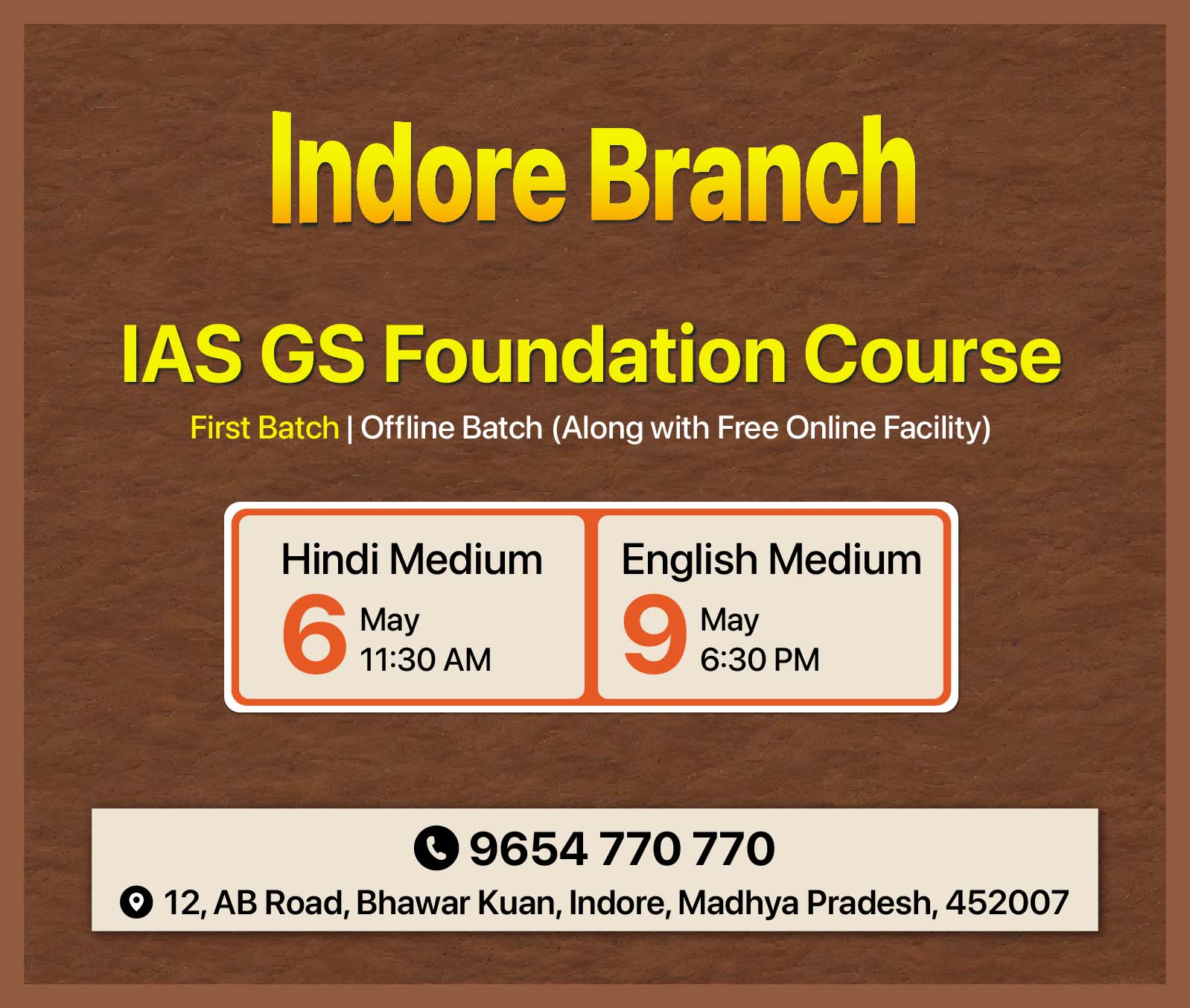
Indian Polity
Issue of Reservation for Muslims in Andhra Pradesh
For Prelims: Reservation, Indra Sawhney Judgment, Article 16 (4), Article 16 (4A), Article 16(4B), Article 15(4)
For Mains: Reservation in Public Employment and related Judgements, Reservation on Basis of Religion
Why in News?
Recently, the issue of the 5% quota given to Muslims in Andhra Pradesh in 2004 has resurfaced, reigniting the debate regarding the religion-based reservation.
What is the Background of the Reservation for Muslims in Andhra Pradesh?
- About:
- In Andhra Pradesh, where Muslims constitute about 9.5% of the population, certain Muslim groups are already included in the state OBC lists, with quotas ranging from 7% to 10%.
- However, there has been a push to include all Muslims in the OBC category, following the models of Karnataka and Kerala.
- In Andhra Pradesh, where Muslims constitute about 9.5% of the population, certain Muslim groups are already included in the state OBC lists, with quotas ranging from 7% to 10%.
- Reservation in 2004:
- In June 2004, the government examined the socio-economic and educational status of Muslims in the state for inclusion in the OBC list, leading to a 5% reservation under Articles 15(4) and 16(4).
- However, the Andhra Pradesh High Court struck down the quota for being implemented without being referred to the Backward Classes Commission and for not excluding the creamy layer.
- Court held that the muslim community cannot be considered as a homogenous group.
- One of the key questions before the court was whether Muslims, as a group, are entitled to affirmative action within the constitutional framework, which the court ruled affirmatively, stating that such reservations do not violate secularism.
- Reservation in 2005:
- The Backward Classes Commission recommended providing reservations to the entire Muslim Community, stating that they are socially, educationally, and economically backward.
- The state government again introduced an Ordinance granting a 5% quota to Muslims, which was subsequently replaced with legislation.
- The High Court once again struck down the quota, stating that the Commission did not rely on objective criteria (M. Nagaraj v. Union Of India, 2006) to conclude that Muslims as a group were backward in Andhra Pradesh.
- The ruling was challenged before the Supreme Court, which in 2010 directed to maintain the status quo till the issue was heard.
- Current Status:
- The final hearing in the Supreme Court was scheduled for 2022. However, the SC decided to hear the case after the Economically Weaker Section (EWS) quota issue was decided.
- The EWS quota was cleared in November 2022, but the AP quota issue is yet to be heard.
- Issues With Andhra Model of Reservation:
- Considering muslims as homogenous group violates principle of equality in the Constitution's Basic Structure.
- It also violates the constitutional prohibition on granting reservations based solely on religion (Articles 15(1) and 16(2)).
- The High Court observed that Andhra Pradesh's reservation quota, already at 46% under Articles 15(4) and 16(4), breached the 50% limit with the addition of a 5% quota for Muslims, questioning the lack of compelling reasons for this breach.
Similar Religion-based Reservation in Other States:
- Kerala: Provides an 8% Muslim quota within its 30% OBC quota.
- Tamil Nadu and Bihar: Also Include Muslim caste groups in their OBC quota.
- Karnataka: Had a 4% sub-quota for Muslims within the 32% OBC quota.
- State government in 2023 redistributed this sub-quota among Vokkaligas and Lingayats.
- Recent Issue of Karnataka:
- National Commission for Backward Classes (NCBC) has summoned the Chief Secretary of the Karnataka government regarding the categorisation of the Other Backward Classes (OBC) quota in Karnataka, specifically addressing the issue of "blanket reservation" for Muslims under Category II-B.
- Current Status: Karnataka categorises Muslims under Category II-B of the OBC categorisation, in addition to 17 Muslim castes in Category I and 19 Muslim castes in Category II-A.
- NCBC's Concern:
- NCBC questions the need for a separate category for Muslims and doubts the validity of reports justifying their backward classification.
- NCBC asserts that Muslims in Karnataka are being over-represented in postgraduate medical admissions due to their categorisation within the OBC quota.
- NCBC is concerned that allowing all Muslims to contest from any OBC or General category seat in local body elections may deprive other deserving OBC communities of opportunities.
- Karnataka Government's Justification:
- The Karnataka government justified categorising Muslims under Category II-B by considering them as neither caste nor religion but as backward classes, as recommended by various State Commissions.
What are Various Legal Provisions Related to Reservation?
- Constitutional Provision:
- Article 16(4) of the Constitution allows for reservation for "backward class of citizens." States have the discretion to determine which communities qualify as backward.
- To qualify for reservations in educational institutions under Article 15, a group must first demonstrate its social and educational backwardness, and for reservations in public employment under Article 16(4), the authorities must establish both the backwardness of the group and its inadequate representation in government employment.
- Article 16(4) of the Constitution allows for reservation for "backward class of citizens." States have the discretion to determine which communities qualify as backward.
- Major Supreme Court’s Judgements:
- The State of Madras v. Smt. Champakam Dorairajan Case, 1951:
- Struck down reservations in educational institutions based solely on caste.
- Led to 1st Amendment of the constitution.
- Indra Sawhney v. Union of India Case, 1992:
- Defined limitations on reservations:
- Creamy layer exclusion
- 50% quota limit
- No reservations in promotions (except SC/ST).
- Defined limitations on reservations:
- M. Nagaraj v. Union Of India Case, 2006:
- Upheld Art. 16 (4A allowing reservations for SC/ST in promotions)
- Established 3 conditions for such policies:
- Social and Educational Backwardness
- Inadequate Representation
- Maintaining Efficiency
- Jarnail Singh vs Lachhmi Narain Gupta Case, 2018:
- Creamy layer exclusion applies to SC/ST in promotions
- No need for quantifiable data on backwardness for SC/ST promotions
- Janhit Abhiyan vs. Union of India, 2022:
- Supreme Court has upheld the validity of the 103rd Constitutional Amendment which provides 10% reservation for the Economically Weaker Sections (EWS) among forward castes in government jobs and colleges across India.
- The State of Madras v. Smt. Champakam Dorairajan Case, 1951:
What are the Arguments Related to Religion-based Reservation in India?
- Arguments in Favour of Religion-Based Reservations in India:
- Socio-Economic Backwardness: According to the Sachar Committee Report, Muslims in India lag behind other communities in terms of socio-economic indicators such as education, employment, and income.
- Reservations can help in bridging this gap.
- Constitutional Mandate: The Indian Constitution provides for affirmative action for socially and educationally backward classes irrespective of the religious and cultural denomination.
- Ensuring Adequate Representation: Reservations can ensure adequate representation of underrepresented religious groups in employment, education, and other fields.
- Socio-Economic Backwardness: According to the Sachar Committee Report, Muslims in India lag behind other communities in terms of socio-economic indicators such as education, employment, and income.
- Arguments Against Religion-Based Reservations in India:
- Secularism: Critics argue that providing reservations based on religion goes against the principle of secularism enshrined in the Indian Constitution, which advocates equal treatment of all religions by the state.
- Undermining National Unity: Religion-based reservations could undermine national unity as it could lead to resentment and division among different communities.
- Economic Criteria: Reservations should be based solely on economic criteria rather than religion, to ensure that benefits reach those who are truly economically disadvantaged, irrespective of their religion.
- Administrative Challenges: Implementing reservations based on religion could pose administrative challenges, such as determining the criteria for identifying beneficiaries and preventing misuse of the system.
Way Forward:
- Socio-Economic Criteria: Instead of religion, reservations could be based on socio-economic criteria, ensuring that benefits reach the most disadvantaged individuals regardless of their religion.
- Empowerment Through Education: Focus on improving educational infrastructure and providing skill development programs to empower the backward communities and enhance their socio-economic status.
- Inclusive Policies: Implement inclusive policies that address the specific needs of the backward religious communities in areas such as education, employment, and healthcare, without resorting to religious-based reservations.
- Dialogue and Consensus: Engage in a dialogue involving all stakeholders to arrive at a consensus to address the socio-economic challenges faced by the various communities, ensuring that any measures taken are in line with constitutional values and principles.
|
Drishti Mains Question: Q. Discuss the constitutional validity and socio-political implications of providing reservation based on religion in India. How does it impact the principles of secularism, equality, and social justice? |
UPSC Civil Services Examination, Previous Year Question (PYQ)
Prelims
Q. With reference to the period of Indian freedom struggle, which of the following was/were recommended by the Nehru report? (2011)
- Complete Independence for India.
- Joint electorates for reservation of seats for minorities.
- Provision of Fundamental Rights for the people of India in the Constitution.
Select the correct answer using the codes given below:
(a) 1 only
(b) 2 and 3 only
(c) 1 and 3 only
(d) 1, 2 and 3
Ans: (b)
Mains:
Q. Whether National Commission for Scheduled Castes (NCSC) can enforce the implementation of constitutional reservation for the Scheduled Castes in the religious minority institutions? Examine. (2018)

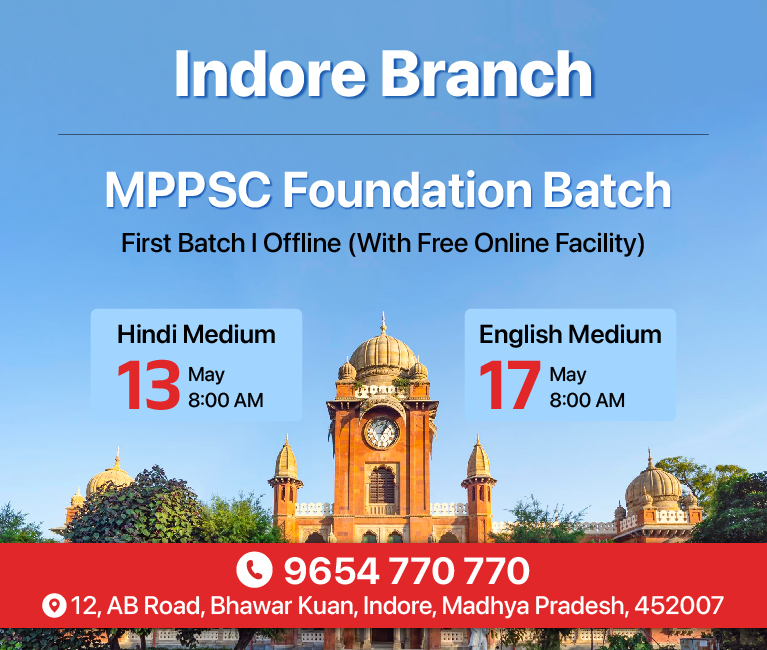
Geography
Massive Floods in Dubai
For Prelims: Rainfall, Drainage System, Climate Change, Cyclones, Tornados.
For Mains: Impacts of Climate Change in India and World, Disaster Resilient Infrastructure, Clean Energy.
Why in News?
Recently, one of the heaviest rainfall was recorded in the United Arab Emirates (UAE), after a severe thunderstorm hit the country. The storm had initially hit Oman before it landed in the UAE.
- On the other hand, Mumbai, lying on the other side of the Arabian Sea, has been undergoing a humid heatwave for the past few days, having a high relative humidity of 55%.
What is the reason for Mumbai’s Hot Weather?
- The reason for Mumbai’s hot weather is a huge Anti-Cyclonic Effect developed in the region.
- Anticyclones are areas of high atmospheric pressure.
- Winds in anticyclones move downward and compress, causing heating. They often lead to large-scale heatwaves.
- Anticyclones can block other weather systems, causing extreme conditions around them.
- In Mumbai, the anticyclone caused a “heat dome” effect, warming the air further.
- Warm air from West Asia and the Arabian Sea was drawn in and heated by sinking motion. This increased humidity in Mumbai, especially before the monsoon season.
- Normally, sea breezes cool Mumbai at night, but the anticyclone may have blocked them. As a result, night temperatures were higher than usual.
What is the Climate of United Arab Emirates (UAE) and Rain Pattern?
- About:
- UAE lies in the arid regions of the world, so such heavy rainfalls are unusual there.
- On average, Dubai experiences 94.7 mm of rain in a year. But this event was historic as it brought more than 142 mm of rainfall that had soaked Dubai over 24 hours.
- Possible Causes of Extreme Rain: The possible causes for such catastrophic event may be attributed to following reasons.
- Climate Change:
- Climate Change along with multiple factors associated with it like patterns of natural climate variability, such as El Niño and La Niña, has contributed to the extreme rain.
- Global warming: It has led to higher temperatures causing evaporation of water not only from land but also oceans and other water bodies, causing a warmer atmosphere to hold more moisture.
- For every 1 degree Celsius rise in average temperature, the atmosphere can hold about 7% more moisture.
- This makes storms more dangerous as it leads to an increase in precipitation intensity, duration and/or frequency of storm.
- Cloud Seeding:
- Cloud seeding is a process in which chemicals such as silver iodide crystals are implanted into clouds to increase rainfall in an environment where water scarcity is a concern.
- UAE, located in one of the hottest and driest regions on earth, has been leading the effort to seed clouds and increase precipitation.
- Thunderstorm:
- Thunderstorms are generated by atmospheric imbalance and turbulence caused by a combination of several conditions, including unstable, warm air rising rapidly into the atmosphere; sufficient moisture to form clouds and rain; and upward lift of air currents caused by colliding weather fronts (cold and warm), sea breezes, or mountains.
- Climate Change:
What are Thunderstorms?
- About:
- It is also known as an electrical storm or a lightning storm, is a storm in which lightning strikes and produces a tremendous audible effect in the Earth's atmosphere.
- It often occurs in warm, humid environments and can bring about intense rainfall, hail, and powerful winds. These storms usually develop in the afternoon or evening and can persist for a few minutes to several hours.
- Formation: There are 3 stages in the formation of a thunderstorm.
- Cumulus stage:
- The ground is greatly heated due to solar insolation.
- Due to the intense lifting of an air parcel, a low pressure begins to form (convention).
- Air from the surrounding area rushes in to fill the void created by the low pressure.
- A towering cumulonimbus cloud forms due to the intense convection of wet hot air.
- Mature Stage:
- Characterised by a strong updraft of rising warm air that causes clouds to develop larger and rise higher. Later, a downdraft sends chilly air and rain to Earth.
- A powerful blast of wind signals the arrival of a thunderstorm. This wind is caused by a strong downdraft.
- The route of the thunderstorm is determined by the updraft and downdraft. The course is erratic the majority of the time.
- Dissipating Stage:
- Hails form when clouds reach heights where temperatures are below freezing, and they fall as hailstorms. There is a lot of precipitation.
- The storm subsides in a matter of minutes, and clear weather begins to prevail.
- Cumulus stage:
Similar Extreme Weather Events in India:
- In 2023, India witnessed a series of unprecedented climatic phenomena, indicating a disturbing new normal caused by climate change.
- The onset of 2023 was marked by scorching temperatures that shattered a 123-year-old record in February.
- Cyclonic Event: the Arabian Sea witnessed the formation of cyclone Biparjoy, which lasted a staggering 13 days, becoming the longest-duration cyclone since 1977.
- According to the India Meteorological Department (IMD), India experienced extreme weather events on 314 of the 365 days in 2022.
- Loss of Human Lives: Erratic weather conditions expose millions of Indians to climate disasters, kill thousands every year and increase economic hardships by eroding farm productivity.
- The events claimed 3,026 lives and damaged 1.96 million hectares (ha) crop area.
- IPCC assessments in 2023 also provided convincing evidence that global warming is triggering severe climate-related occurrences like non-stop heavy rainfall.
- India is losing 3-5% of its GDP due to climate change and this number could rise to as much as 10% if the warming is not limited to below 2 degrees Celsius.”
- Shifting Monsoon Patterns: It is characterised by prolonged deficit rainfall periods followed by intense downpours occurring over a few days.
- This pattern has been strengthening over the past several decades.
- The combination of warmer temperatures, increased moisture in the air, and the southwest monsoon’s impact is resulting in heavy rainfall concentrated within a short span of time.
- Recent heavy rainfall in northern India can be attributed to the interaction between a low-pressure weather system known as the western disturbance and the southwest monsoon.
|
Drishti Mains Question: Discuss how Climate Change has accelerated the frequency and magnitude of Extreme Weather Events. Also, suggest the measures that need to be taken in order to enhance our preparedness to deal with these events. |
UPSC Civil Services Examination, Previous Year Question
Prelims:
Q. La Nina is suspected to have caused recent floods in Australia. How is La Nina different from El Nino? (2011)
- La Nina is characterised by an usually cold ocean temperature in equatorial Indian Ocean whereas El Nino is characterised by unusually warm ocean temperature in the equatorial Pacific Ocean.
- El Nino has adverse effect on south-west monsoon of India but La Nina has no effect on monsoon climate.
Which of the statements given above is/are correct?
(a) 1 only
(b) 2 only
(c) Both 1 and 2
(d) Neither 1 nor 2
Ans: D
Q. The scientific view is that the increase in global temperature should not exceed 2°C above pre industrial level. If the global temperature increases beyond 3°C above the pre-industrial level, what can be its possible impact/impacts on the world? (2014)
- Terrestrial biosphere tends toward a net carbon source.
- Widespread coral mortality will occur.
- All the global wetlands will permanently disappear.
- Cultivation of cereals will not be possible anywhere in the world.
Select the correct answer using the code given below:
(a) 1 only
(b) 1 and 2 only
(c) 2, 3 and 4 only
(d) 1, 2, 3 and 4
Ans: (b)
Q. In the context of India’s preparation for Climate-Smart Agriculture, consider the following statements: (2021)
- The ‘Climate-Smart Village’ approach in India is a part of a project led by the Climate Change, Agriculture and Food Security (CCAFS), an international research programme.
- The project of CCAFS is carried out under Consultative Group on International Agricultural Research (CGIAR) headquartered in France.
- The International Crops Research Institute for the Semi-Arid Tropics (ICRISAT) in India is one of the CGIAR’s research centres.
Which of the statements given above are correct?
(a) 1 and 2 only
(b) 2 and 3 only
(c) 1 and 3 only
(d) 1, 2 and 3
Ans: (d)
Q. During a thunderstorm, the thunder in the skies is produced by the: (2013)
- Meeting of cumulonimbus clouds in the sky
- Lightning that separates the nimbus clouds
- Violent upward movement of air and water particles
Select the correct answer using the codes given below.
(a) 1 only
(b) 2 and 3
(c) 1 and 3
(d) None
Ans: (d)
Q.3 With reference to ‘Global Climate Change Alliance’, which of the following statements is/are correct? (2017)
- It is an initiative of the European Union.
- It provides technical and financial support to targeted developing countries to integrate climate change into their development policies and budgets.
- It is coordinated by World Resources Institute (WRI) and World Business Council for Sustainable Development (WBCSD).
Select the correct answer using the code given below:
(a) 1 and 2 only
(b) 3 only
(c) 2 and 3 only
(d) 1, 2 and 3
Ans: (a)
Mains:
Q. ‘Climate Change’ is a global problem. How will India be affected by climate change? How Himalayan and coastal states of India are affected by climate change? (2017)


Important Facts For Prelims
Mpox Virus
Why in News?
Recently, a study revealed a novel adaptation mechanism of the Mpox virus enhancing its ability to infect humans amidst recent outbreaks.
- The name was changed from "monkeypox" to "mpox" to avoid stigma towards monkeys and reflect the virus's direct human infectivity.
What is Mpox?
- About:
- Mpox, also known as monkeypox, is a DNA virus. It belongs to the family Poxviridae, which consists of large, double-stranded DNA viruses.
- The virus was first identified in monkeys in 1958 but has since been found to infect humans as well.
- Transmission: Mpox is primarily transmitted to humans from animals, particularly rodents and primates, through direct contact or through contaminated objects.
- Symptoms: Mpox infection in humans typically presents with fever, headache, muscle aches, and a characteristic rash that progresses from macules to papules to vesicles and pustules.
- Vaccination: While a vaccine for mpox exists, its availability and effectiveness are limited, highlighting the need for improved prevention and control measures.
- Mpox, also known as monkeypox, is a DNA virus. It belongs to the family Poxviridae, which consists of large, double-stranded DNA viruses.
- Global Outbreaks: Mpox gained global attention during a widespread outbreak that affected over 100,000 people in more than 118 countries in 2022-2023.
- The outbreak was characterised by high human-to-human transmission, particularly through close contact and the sexual route.
- WHO Declaration: The World Health Organization (WHO) declared the mpox outbreak a public health emergency, leading to coordinated efforts to control its spread.
- Genomic Features:
- Clades and Lineages: Mpox genomes are divided into clades I and II, with evidence suggesting clade I has higher mortality.
- The 2022 outbreak involved a new lineage, clade IIb, better adapted for human-to-human transmission.
- Genomic Analysis: Researchers found evidence of a distinct lineage of clade I associated with human-to-human transmission, suggesting a recent zoonotic spillover event.
- Evolutionary Adaptations: Mpox viruses can undergo genomic accordion through gene duplication or deletion to adapt to different hosts and environments.
- A study published in Nature Communications sequenced the genome of the mpox virus from the 2022 outbreak, revealing that certain sections strongly influence human-to-human transmission and are the virus's genomic accordions.
- Clades and Lineages: Mpox genomes are divided into clades I and II, with evidence suggesting clade I has higher mortality.
Note
- Genomic accordion refers to the rhythmic expansions and contractions in the size of a virus's genome, specifically observed in poxviruses like mpox.
- This phenomenon is driven by the duplication or deletion of genes within the virus's genome, leading to changes in its size and content.
Difference Between Small Pox, Chicken Pox, Mpox
| Feature | Smallpox | Monkeypox | Chickenpox |
| Virus | Variola virus | Monkeypox virus | Varicella-zoster virus (VZV) |
| Severity | Highly severe, often fatal | Milder than smallpox, rarely fatal | Mild |
| Status | Eradicated in 1980 | Endemic in Central and West Africa, cases emerging elsewhere | Common childhood illness, less common due to vaccination |
| Transmission | Highly contagious through respiratory droplets and contact with infected lesions | Spread through contact with infected animals, lesions, or bodily fluids | Highly contagious through respiratory droplets and contact with lesions |
| Symptoms | Fever, headache, severe fatigue, vomiting, followed by a deep-seated, pus-filled rash |
Fever, headache, swollen lymph nodes, followed by a rash that progresses through stages |
Fever, fatigue, loss of appetite, followed by an itchy, fluid-filled rash |
| Vaccination | No longer needed | Not routinely recommended, may be given to high-risk individuals | Routine vaccination for children and adults who haven't had chickenpox |
UPSC Civil Services Examination, Previous Year Questions (PYQs)
Prelims:
Q. The term ‘ACE2’ is talked about in the context of (2021)
(a) genes introduced in the genetically modified plants
(b) development of India’s own satellite navigation system
(c) radio collars for wildlife tracking
(d) spread of viral diseases
Ans: (d)
Q. Which of the following are the reasons for the occurrence of multi-drug resistance in microbial pathogens in India? (2019)
- Genetic predisposition of some people
- Taking incorrect doses of antibiotics to cure diseases
- Using antibiotics in livestock farming
- Multiple chronic diseases in some people
Select the correct answer using the code given below.
(a) 1 and 2
(b) 2 and 3 only
(c) 1, 3 and 4
(d) 2, 3 and 4
Ans: (b)
Mains:
Q. Critically examine the role of WHO in providing global health security during the Covid-19 pandemic. (2020)

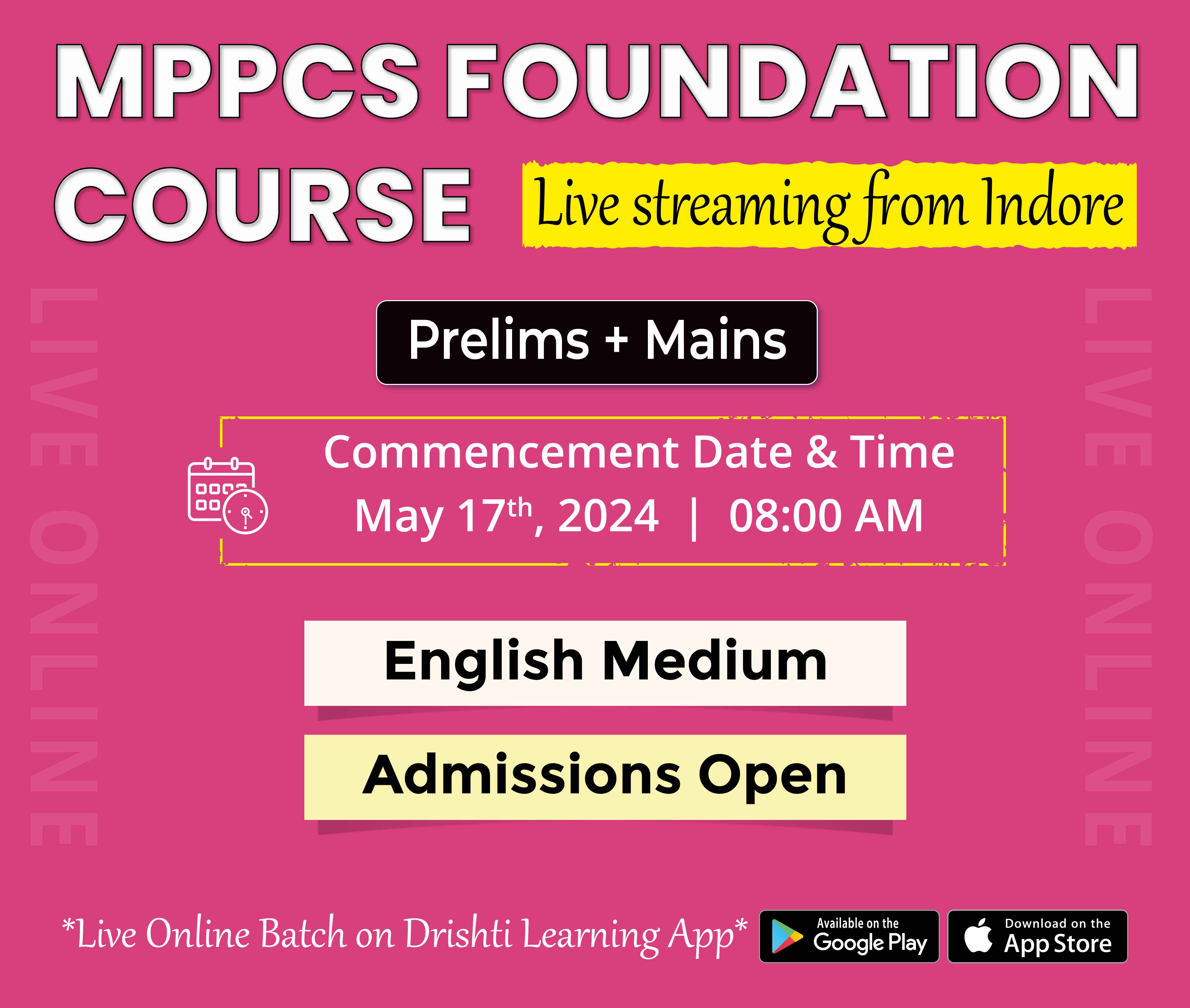
Important Facts For Prelims
Satellite Technology Day 2024
Why in News?
U R Rao Satellite Centre (formerly known as ISRO Satellite Centre (ISAC)), Department of Space, in Bengaluru recently celebrated Satellite Technology Day (STD) 2024, marking the significant milestone of the 50th anniversary of India's first satellite launch, Aryabhata, on 19th April 1975.
- The event highlighted URSC's achievements along with recent missions like Chandrayaan-3, Aditya-L1, and X-ray Polarimeter Satellite which garnered national and international recognition.
What are the Key Facts About Aryabhata Satellite?
- The Aryabhata spacecraft, named after the 5th Century CE mathematician and astronomer, was India's first satellite. It was completely designed and fabricated in India and launched from Kapustin Yar, Russia on 19th April 1975.
- On that day, India became only the world’s 11th nation to send a satellite into orbit.
- Aryabhata was built by the Indian Space Research Organization (ISRO) to conduct experiments in X-ray astronomy, aeronomics, and solar physics.
| Aryabhata Satellite | |
| Payload | X-ray Astronomy Aeronomy and Solar Physics |
| Launch site | Volgograd Launch Station (presently in Russia) |
| Launch vehicle | C-1 Intercosmos |
U R Rao Satellite Centre
- U R Rao Satellite Centre named after the former ISRO Chairman Dr. Udupi Ramachandra Rao, it is the lead centre of the ISRO responsible for design, development, checkout & integration of communication, navigation, remote sensing, scientific and small satellite missions.
- URSC is actively involved in creating cost-effective space infrastructure for India.
- The centre is responsible for the total Spacecraft project management from the Conceptualisation phase to In-orbit spacecraft operationalisation phase.
UPSC Civil Services Examination Previous Year Question (PYQ)
Q. With reference to India’s satellite launch vehicles, consider the following statements: (2018)
- PSLVs launch satellites useful for Earth resources monitoring whereas GSLVs are designed mainly to launch communication satellites.
- Satellites launched by PSLV appear to remain permanently fixed in the same position in the sky, as viewed from a particular location on Earth.
- GSLV Mk III is a four-staged launch vehicle with the first and third stages using solid rocket motors; and the second and fourth stages using liquid rocket engines.
Which of the statements given above is/are correct?
(a) 1 only
(b) 2 and 3
(c) 1 and 2
(d) 3 only
Ans: (a)
Q2. Consider the following statements: (2010)
The satellite Oceansat-2 launched by India helps in
- estimating the water vapour content in the atmosphere
- predicting the onset of monsoons.
- monitoring the pollution of coastal waters.
Which of the statements given above is/are correct?
(a) 1 and 2 only
(b) 2 only
(c) 1 and 3 only
(d) 1, 2 and 3
Ans: (d)

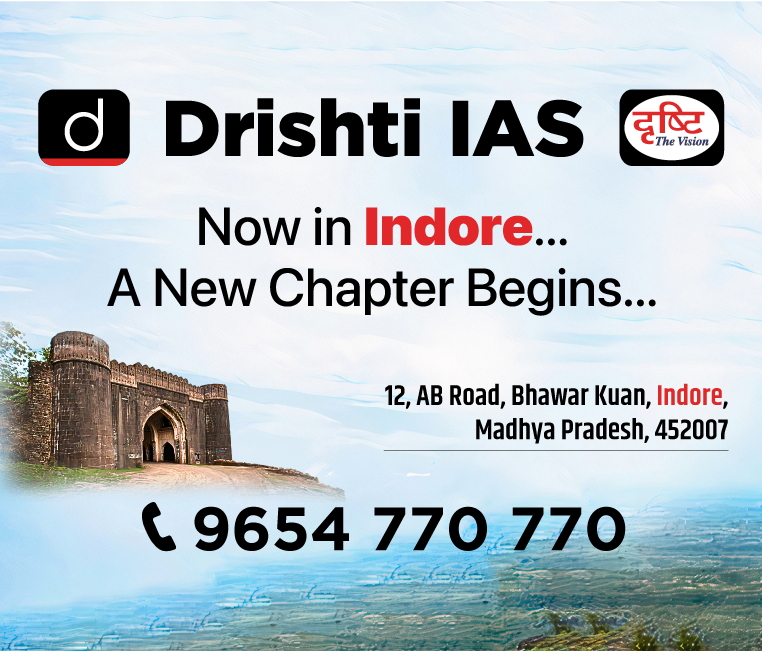
Important Facts For Prelims
Ikshvaku Period Coins Found in Telangana
Why in News?
Recently, Telangana’s Department of Heritage discovered a hoard of 3,730 lead coins in an earthen pot at Phanigiri, a renowned Buddhist heritage site located 110 km away from Hyderabad.
What are the Findings of the Excavation?
- Recent Excavation:
- A globular pot measuring 16.7 cm in diameter and 15 cm in height was unearthed at a depth of 40 cm from the ground level in the Southernmost monastic cell.
- The pot's mouth was covered with a shallow pot on the outside and a broken bowl base on the inside and contained 3730 coins weighing an average of 2.3 grams each.
- Archaeologists conclude that all coins, similar in appearance and made of lead, featuring an elephant symbol on the obverse and Ujjain symbol on the reverse, belong to the Ikshvaku period (3rd-4th century CE) based on strata graphical and typological studies.
- Other Artefacts Found:
- Many other valuable cultural antiquities and structural remains, including beads of stone and glass, shell bangle fragments, stucco motifs, broken limestone sculptures, toy cartwheels, iron nails, and pottery, were also unearthed during the excavation.
- Earlier Excavation:
- Excavations at Phanigiri have been conducted on seven separate occasions in the past.
- These excavations at Phanigiri brought to light a Mahastupa, apsidal Chaitya Grihas, Votive stupas, pillared congregation halls, Viharas, platforms with staircases at various levels, octagonal stupa chaitya.
- A 24-pillared mandapa, a circular chaitya, and cultural materials including terracotta beads, semi-precious beads, iron objects, shell bangle pieces, coins, stucco figures, Brahmi label inscriptions, and a holy relic casket were also found.
- Excavations at Phanigiri have been conducted on seven separate occasions in the past.
- Significance of Phanigiri Village:
- Phanigiri village lies on the left bank of the Bikkeru Rivulet, a tributary of the river Musi in Hyderabad.
- It is one of the important Buddhist monasteries strategically located on the hilltop, on the ancient trade route (Dakshinapatha) connecting north to south.
- Etymologically, the village Phanigiri has derived its name from the shape of a hillock located on the northern side of the village, which is like a snake hood.
- In Sanskrit, Phani means snake and Giri means hillock.
- This village was occupied by pre/proto-historic, early historic, early medieval, and Asaf Jahi period (1724-1948) inhabitants.
- This village had a vibrant life from 1000 BCE to late 18th century CE.
- This evolved Buddhist monastery surpasses the monasteries at Amaravathi and Vijayapuri (Nagarjunakonda) in Andhra Pradesh.
- The early historic site at Phanigiri was first discovered and protected during the period of Nizam and was excavated from 1941 to 1944 by Sri Khaja Mahamad Ahmad.
- Other Buddhist Sites in the Region:
- There are several Buddhist sites near Phanigiri, such as Vardhamanukota, Gajula Banda, Tirumalagiri, Nagaram, Singaram, Aravapalli, Ayyavaripalli, Arlagaddagudem and Yeleswaram.
Stratigraphical and Typological Studies of Coins
These are methods used in numismatics (the study of coins) to understand the chronological and cultural context of coins.
- Stratigraphical Studies:
- This method involves studying the layer or strata in which coins are found during archaeological excavations.
- By analysing the stratigraphy, researchers can determine the relative age of coins compared to other artefacts found in the same layer.
- This helps establish a chronological sequence of coinage and understand the history of a site.
- Typological Studies:
- Typology is the classification of coins based on their physical characteristics, such as design, metal composition, size, and inscriptions.
- By comparing these features, numismatists can group coins into types and subtypes.
- Typological studies help in identifying the origin, minting authority, and period of circulation of coins.
What are the Key Facts About the Ikshvaku Period?
- About:
-
The Ikshvakus emerged in the Krishna-Guntur region following the decline of Satavahana power in the eastern part of the peninsula.
-
The Ikshvaku dynasty (300 CE- 400 CE), is named after the legendary King Ikshvaku.
-
-
Knowledge of the Ikshvakus comes primarily from inscriptions, coinage, and archaeological excavations.
-
Evidence suggests that the dynasty emerged in the Vijayapuri region (modern Bellary district, Karnataka) around the 3rd century CE.
-
The Ikshvakus were succeeded by Pallavas.
-
-
- Expansion and Consolidation:
- The Ikshvakus rose to prominence under King Kanha, who significantly expanded their territory.
- Kanha's conquests encompassed parts of Andhra Pradesh, Telangana, and Maharashtra, establishing a formidable regional power.
- Cultural and Economic Contributions:
- The dynasty actively patronised Buddhism, leading to the construction of magnificent stupas and monasteries, like those at Kanaganahalli and Sankaram.
- Ikshvaku coins, featuring Buddhist symbols and regional deities, were widely circulated during this era.
UPSC Civil Services Examination, Previous Year Questions (PYQs)
Prelims:
Q. With reference to the history of India, the terms “kulyavapa” and “dronavapa” denote (2020)
(a) measurement of land
(b) coins of different monetary value
(c) classification of urban land
(d) religious rituals
Ans: (a)
Q. In medieval India, the term “Fanam” referred to:
(a) Clothing
(b) Coins
(c) Ornaments
(d) Weapons
Ans: (b)
Mains:
Q. How do you justify the view that the level of excellence of the Gupta numismatic art is not at all noticeable in later times? (2017)


Rapid Fire
India’s Biggest Climate Clock
Recently, the Council of Scientific &Industrial Research (CSIR), installed and activated India’s biggest Climate Clock at the CSIR Headquarters in New Delhi as a part of the Earth Day Celebrations.
- The event signifies CSIR’s aim to spread awareness about climate change and to make people energy literate.
- It was launched in 2015 to provide a measuring stick against which viewers can track climate change mitigation progress.
- It is a graphic to demonstrate how quickly the planet is approaching 1.5°C of global warming, given current emissions trends. It also shows the amount of CO2 already emitted, and the global warming to date.
- The date shown when humanity reaches 1.5°C will move closer as emissions rise, and further away as emissions decrease.
- As of 4th April 2024, the current climate temperature is 1.295°C.


Rapid Fire
National Panchayati Raj Day 2024
The National Colloquium on "Governance at the Grassroots after Three Decades of the 73rd Constitutional Amendment" was inaugurated in New Delhi to mark National Panchayati Raj Day 2024.
- The event will honour the best panchayats with awards for their efforts in improving the lives of rural households.
- The Ministry of Panchayati Raj in India observes 24th April as National Panchayati Raj Day each year. The 73rd Amendment Act of 1992 which gave constitutional status to Panchayati Raj Institutions (PRIs) and improved local self-governance in India was enacted on this day.
- India's three-tiered (Gram Panchayat, Panchayat Samiti and Zila Parishad) administrative structure is known as the Panchayati Raj system, it aims to bring about improvement at the grassroots level in rural areas.
- It is important for achieving inclusive growth and addressing issues like climate change and rural-to-urban migration
Read more: National Panchayati Raj Day


Rapid Fire
Next-Gen Sodium Batteries
Recently, scientists from South Korea have developed next-generation sodium batteries capable of charging in just a few seconds.
- These new hybrid sodium-ion batteries combine materials from traditional batteries with those used in supercapacitors.
- These are both cheaper and safer than the conventional lithium-ion batteries found in smartphones and electric cars.
- Sodium (Na) is also 500 times more abundant than lithium, while holds the potential for greater charge and efficiency than its Li-ion batteries..
- Sodium-ion batteries haven't been widely adopted due to drawbacks like slow charging and low energy storage.
- This new battery offers:
- Faster charging times than current lithium-ion batteries.
- Higher energy density than commercial lithium-ion batteries (247 Wh/kg).
- High power density (34,748 W/kg).
- Its potential applications include electric vehicles and consumer electronics.
Read more: sodium-ion batteries


Rapid Fire
Infrastructure investment trust (InvIT)
IndoSpace, a developer of industrial and logistics parks in India, aims to launch an infrastructure investment trust (InvIT) to raise USD 700-800 million.
- This will be the biggest InvIT in India's industrial and logistics sector. IndoSpace owns 52 industrial logistics parks in 11 cities of India.
Infrastructure Investment Trusts (InvIT):
- InvITs are instruments that work like mutual funds. They are designed to pool small sums of money from a number of investors to invest in assets that give cash flow over a period of time. Part of this cash flow would be distributed as dividends back to investors.
- The minimum investment amount in an InvIT Initial Public Offering (IPO) is Rs 10 lakh, therefore, InvITs are suitable for high net-worth individuals, institutional and non-institutional investors.
- Similar to stocks, InvITs raise capital through IPOs and are then tradable on stock exchanges. Examples of listed InvITs include the IRB InvIT Fund and India Grid Trust.
- InvITs are regulated by the Securities and Exchange Board of India (SEBI) (Infrastructure Investment Trusts) Regulations, 2014.
Read more: Infrastructure investment trust (InvIT), Securities and Exchange Board of India



